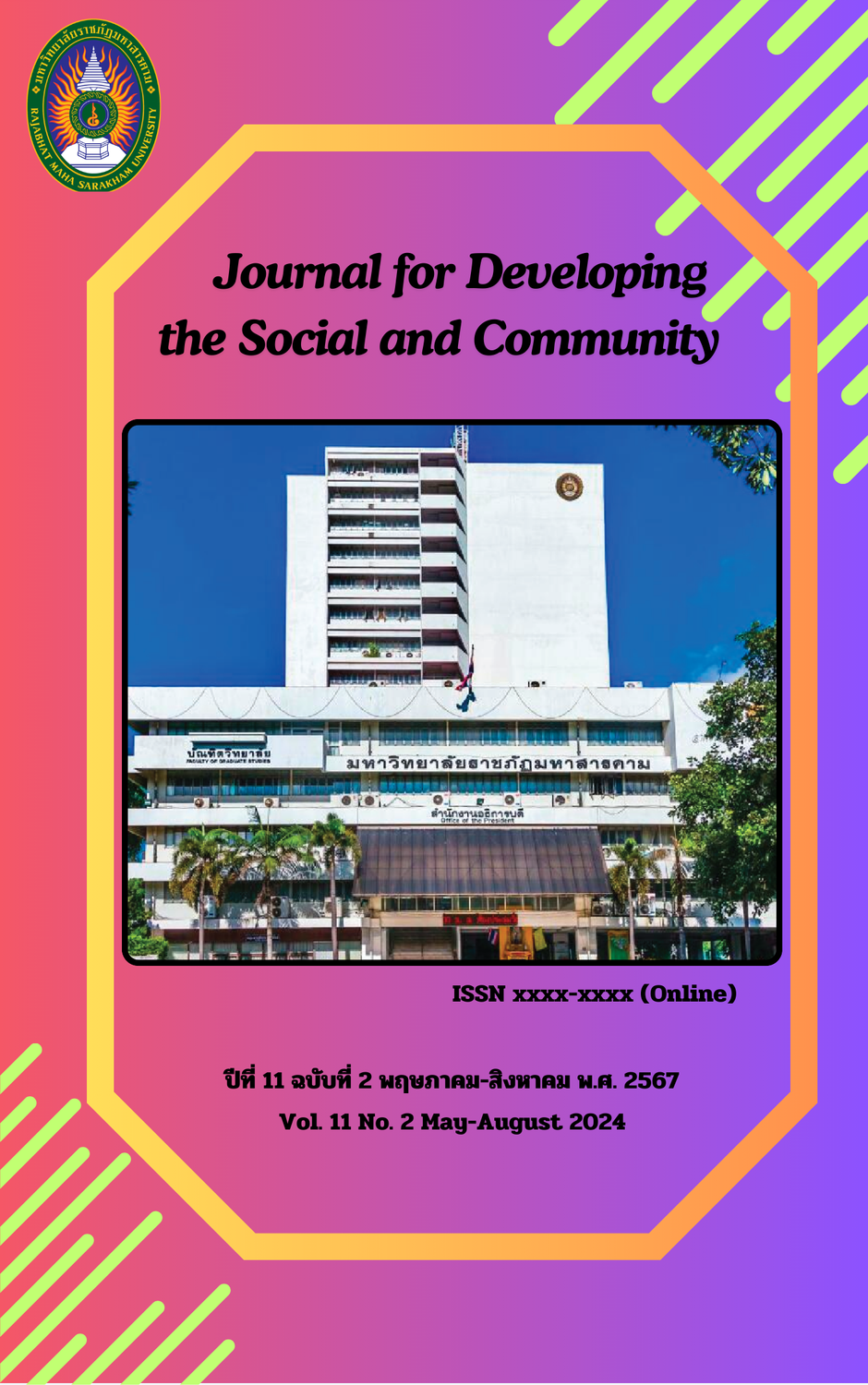Study of number sense and mathematical problem solving for grade 7 students
Keywords:
Number sense, Mathematical problem solvingAbstract
This research article aims to 1) study the number sense of of the grade 7 students, 2) study the mathematical problem solving of the grade 7 students and 3) study the relationship between number sense and the mathematical problem solving the grade 7 students. The target group used in this research was a grade 7 students at Tha Khon Yang Pittayakhom School. Kantharawichai District, Maha Sarakham Province, In the second semester of the academic year 2023, 55 people. Research tools were a level of number sense quiz, a mathematical problem solving quiz, and semi-structure interviews about number sense and mathematical problem solving. Statistics for research were percentage, average, standard deviation, pearson correlation coefficient and data were presented through descriptive analytics.
The results of the study revealed that: 1) The Number sense of the grade 7 students mostly at a moderate level, representing 45.45 percent. and number sense aspect the meaning of the number at a high level, representing 45.45 percent, number sense aspect the relative size of numbers and number sense aspect relative results of various operations of numbers at a moderate level, representing 47.27 percent and representing 45.45 percent respectively. 2) The mathematical problem solving of the grade 7 students mostly at mathematical problem solving is in good level, representing 45.45 percent, and 3) the relation between the number sense and mathematical problem solving is very elated. With the coefficient of relations equal to .965 and there is a positive relationship that is statistically significant at 0.01 level. And from the interviews, it was Students with a high level of number sense Be confident in answering questions Analyze problems clearly Can you tell what the problem has given you? Can tell what the problem needs to be found. which has clearly planned methods for finding answers Choose the appropriate method to solve the problem and use other methods than the original method to find the answer. Able to solve complex problems and can check answers correctly and clearly.
References
Howden, H. (1989). Teaching number sense, Arithmetic Teacher, 36(6), 6-11.
Institute for the Promotion of Teaching Science and Technology. (2002). Number Sense. Bangkok: SPN. Printing.
Institute for the Promotion of Teaching Science and Technology. (2007). Measurement and evaluation for quality Learn and sample exams from the International Student Assessment Program. Bangkok: Seven Printing Group.
Lester, F.K. (1977). Ideas about problem Solving : A look at some psychological research, Arithmetic Teacher, 25(11), 174.
Mon Kyaw, A. (2018). A study of the relationship between The number sense and problem solving skills In mathematics of middle school students. Yangon : Yangon University of Education.
Naoyenphon, P. (2011). Solving math problems, In the collection of subjects on the subject matter and methods of mathematics. Bangkok: Sukhothai Thammathirat Open University Printing House.
Putthi, S. (2021). study of mathematical ability and number sense that affects mathematics learning achievement on the subject of basic knowledge about real numbers for grade 8 students. Master of Education (Mathematic Education). Maha Sarakham: Maha Sarakham Rajabhat University.
Rattanaphonsaen, C. (2022). Study of the relationship between relational thinking and mathematical problem solving of grade 7 students. Master of Education (Mathematic Education). Maha Sarakham: Rajabhat Maha Sarakham University.
Reys, R. (1998). Computation versus number sense. Mathematics teaching in the middle school, 4(2), 110-112.
Suwapanich, S. (2003). Teaching behavior Elementary Mathematics. Maha Sarakham: Rajabhat Maha Sarakham University.
Tha Khon Yang Pittayakhom School. (2022). Report on basic national educational test results (O-NET) Mathayom 3. Maha Sarakham: National Institute of Educational Testing Senvice (Public Organization).
Worakham, P. (2021). Education Research (12th edition). Maha Sarakham: Taksila Printing.
Downloads
Published
How to Cite
Issue
Section
License
Copyright (c) 2024 Journal for Developing the Social and Community

This work is licensed under a Creative Commons Attribution-NonCommercial-NoDerivatives 4.0 International License.
Articles that are published are copyrighted by the authors of the articles







